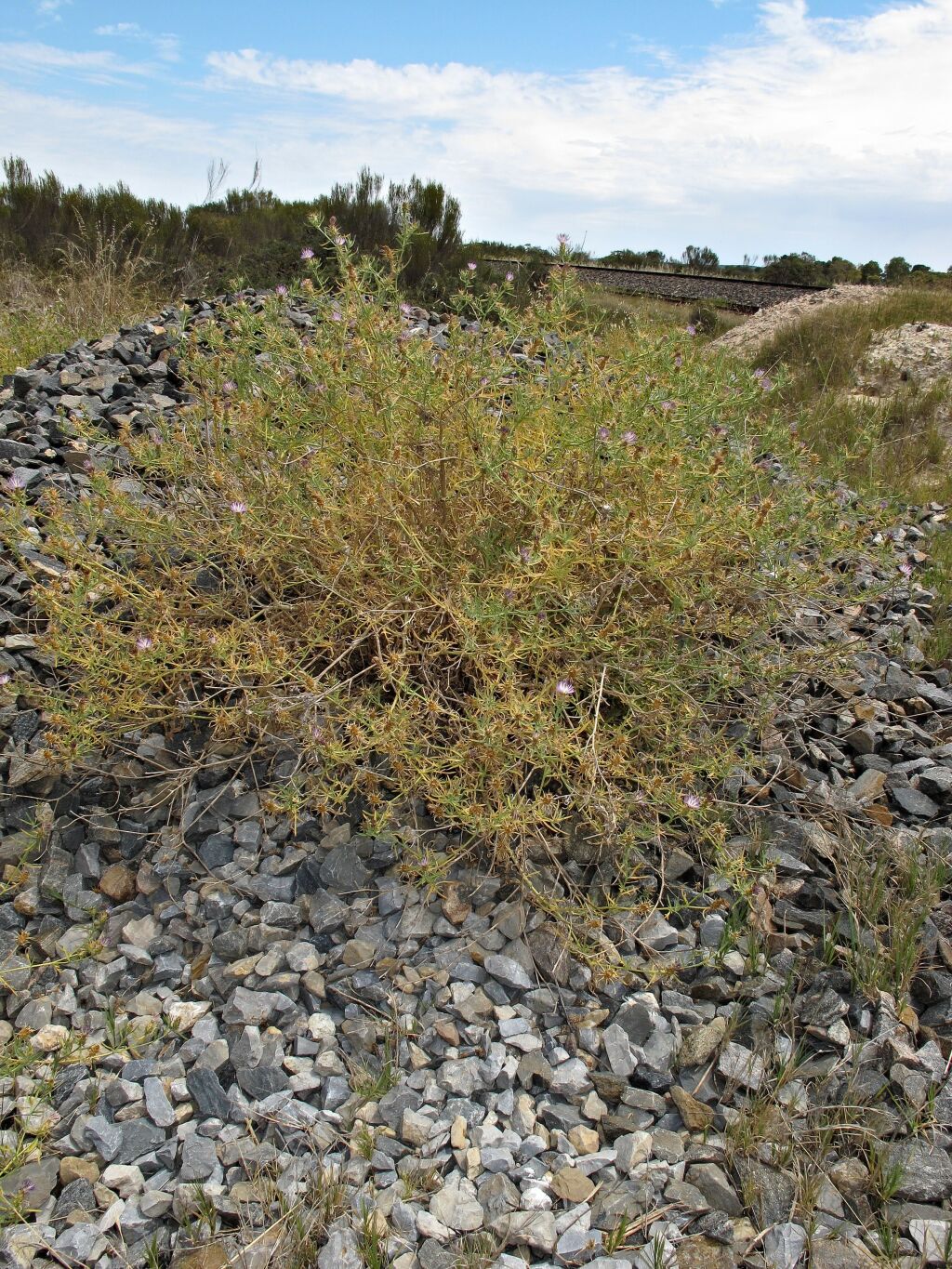Centaurea
Annual, biennial or perennial herbs; stems branched or almost absent, erect or ascending, terete or winged. Leaves basal and cauline, alternate, entire to deeply pinnatisect. Capitula ovoid or globose, terminal, in groups of 2 or 3 or solitary, pedunculate or sessile; involucral bracts in several series, unequal, imbricate, outer ones herbaceous with a comb-like or spiny appendage; receptacle flat, hairy. Florets tubular, purple, blue, yellow or white; outer florets sterile, often spreading; inner florets bisexual; corolla deeply 5–8-lobed; anthers sagittate at base with the lobes tailed, apex with acute appendages; style bilobed, with linear erect branches, apices obtuse. Cypselas obloid or ovoid, compressed, asymmetric with attachment scar on one side, glabrous or hairy; pappus of 2–many series of scales or bristles, or reduced or totally absent, sometimes caducous.
500–600 species, mostly from the Mediterranean region and Asia, a few species from tropical Africa and North and South America; cosmopolitan weeds, 13 species naturalised in Australia.
Centaurea scabiosa L. (Greater Knapweed) has been collected as a garden-escape at Narrawong near Portland, but is probably not truly naturalized there or elsewhere in Australia. This sturdy European perennial herb grows to c. 80 cm high, has pinnatisect cauline leaves, large purple capitula, involucral bracts with finely fringed upper margins, and pubescent cypselas with a pappus of similar length. Centaurea cyanus L. (Cornflower) has been collected near Melbourne but there is no evidence to suggest it is naturalized in Victoria as it is in New South Wales. A robust, commonly cultivated European annual or biennial herb growing to c. 80 cm high, it has narrow entire cauline leaves, intense blue (occasionally white) capitula, involucral bracts with a few broad-based teeth on the upper margins, and pubescent cypselas with a pappus of similar length.
Jeanes, J.A. (1999). Asteraceae. In: Walsh, N.G.; Entwisle, T.J., Flora of Victoria Vol. 4, Cornaceae to Asteraceae, pp. 652–666. Inkata Press, Melbourne.
 Spinning
Spinning



